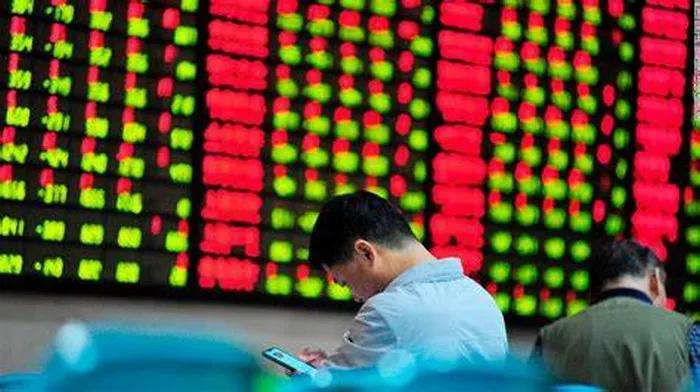The New York Stock Exchange (NYSE) is one of the largest and most influential stock exchanges in the world. Throughout its history, the NYSE has played a pivotal role in shaping global financial markets. Initially, the exchange traded various financial instruments such as bonds, commodities, and stocks. However, over time, stocks have become the dominant trading instrument on the exchange. This article will explore the reasons behind the NYSE’s shift to primarily trading stocks, examining historical, economic, and technological factors that contributed to this transformation.
The Origins of the New York Stock Exchange
The NYSE, founded in 1792, began as a small group of stockbrokers trading securities under a buttonwood tree in lower Manhattan. Over the years, the NYSE evolved into a formalized exchange, and as the U.S. economy grew, so did the need for a marketplace where securities could be bought and sold efficiently. In its early years, the NYSE primarily facilitated the trading of government bonds, which were issued to finance the nation’s wars and infrastructure projects.
However, by the mid-19th century, corporate bonds and stocks started to emerge as a prominent segment of the market. The rapid expansion of industrialization in the United States led to the creation of many new corporations, which needed capital. Investors, in turn, began to seek opportunities to purchase shares of these companies through public offerings. Stocks, due to their potential for capital appreciation and dividends, quickly gained popularity.
1. The Rise of Corporations and the Need for Capital
In the late 1800s and early 1900s, the industrial revolution radically changed the economic landscape. Companies in industries like railroads, steel, and oil were rapidly expanding, and these businesses required massive amounts of capital to fund their operations and expansion plans. One of the easiest ways for these companies to raise capital was through the sale of stock.
Stocks represented ownership in a company, and as corporations grew in size and scope, investors sought opportunities to buy shares and gain exposure to the companies’ growth. This shift from debt instruments, like bonds, to equity (stock) instruments was pivotal in the history of the NYSE. As more companies chose to issue shares rather than rely solely on borrowing, the demand for stock trading on the exchange soared.
2. Stocks Became the Preferred Investment Vehicle
By the turn of the 20th century, stocks had firmly established themselves as the preferred investment vehicle. Unlike bonds, which offer fixed returns, stocks provided investors with a share of a company’s profits through dividends and potential for price appreciation. The rise of stock trading was also driven by a growing middle class that sought opportunities for wealth creation. The promise of high returns from well-performing stocks made them more attractive to investors compared to other financial instruments.
Moreover, stocks began to play a more significant role in diversifying investment portfolios. Bonds were seen as relatively safe but low-yielding, while stocks, though riskier, offered the potential for much higher returns. The ability to purchase shares of companies in different industries allowed investors to spread their risk while maximizing their potential returns. As a result, stocks became the primary focus of trading on the NYSE.
3. Technological Advances and the Growth of the Stock Market
As the 20th century progressed, technological innovations played a significant role in the evolution of stock trading. The advent of the telegraph, and later the telephone, allowed for faster and more efficient communication between brokers and traders. This made it easier to execute trades and for the NYSE to handle the growing volume of stock transactions.
By the mid-1900s, the introduction of computers and other electronic technologies helped further streamline trading processes. The creation of electronic order books and automated trading systems increased efficiency and speed in stock trading, reducing the reliance on traditional methods of trading, such as open outcry. The rise of electronic trading also helped to reduce transaction costs, which made stock trading more attractive to a broader range of investors.
4. Regulatory Changes and Market Stability
Throughout the 20th century, the U.S. government introduced numerous regulatory reforms aimed at stabilizing and modernizing financial markets. One of the most important pieces of legislation in this regard was the Securities Exchange Act of 1934, which created the Securities and Exchange Commission (SEC) and gave the SEC the authority to oversee stock exchanges and enforce regulations aimed at protecting investors.
This regulatory oversight helped to increase investor confidence in the stock market. As more individuals and institutions began to invest in stocks, the volume of stock trading on the NYSE increased dramatically. Investors were reassured by the transparency and stability provided by these regulatory measures, and the demand for stocks continued to grow.
5. The Expansion of Mutual Funds and Pension Funds
In the latter half of the 20th century, mutual funds and pension funds became increasingly popular investment vehicles. These funds typically invested in a diversified portfolio of stocks, and their growth contributed to the overall rise in stock trading. Mutual funds made it easier for individual investors to access a broad range of stocks without having to pick individual stocks themselves. Pension funds, which manage retirement savings for millions of people, also invested heavily in stocks to generate returns for future retirees.
As a result, stocks became the dominant asset class for these institutional investors. The sheer volume of money flowing into the stock market from mutual funds, pension funds, and other institutional investors further fueled the growth of stock trading on the NYSE.
6. The Impact of Globalization on the Stock Market
In the late 20th and early 21st centuries, globalization played a significant role in the growth of stock markets, including the NYSE. As global trade expanded, U.S. companies increasingly sought to access international markets and raise capital from foreign investors. The NYSE became a central hub for global financial activity, and stocks of multinational corporations were traded on the exchange.
This global expansion of the stock market made equities even more attractive to investors. Foreign investors gained easier access to U.S. stocks, and U.S. investors could diversify their portfolios with international stocks. The increased demand for stocks from both domestic and international investors contributed to the NYSE’s dominance as a marketplace for stock trading.
7. The Decline of Bond Trading on the NYSE
While stocks were experiencing explosive growth, bond trading on the NYSE began to decline. Bonds, particularly U.S. government bonds, were increasingly traded on other exchanges and over-the-counter (OTC) markets. The development of specialized bond markets, such as the Chicago Board of Trade (CBOT) and the Bond Market Association, made it more efficient for investors to trade bonds outside of the NYSE.
This shift occurred for several reasons. First, bonds are typically issued in large denominations, which made them less accessible to individual investors. Second, bond trading is less dynamic compared to stock trading, as bonds tend to have fixed maturities and interest payments. The lack of liquidity in bond markets also made it less attractive for brokers and investors to trade bonds on the NYSE. As a result, bond trading moved to other markets, while stocks continued to dominate the NYSE.
The Future of Stock Trading on the NYSE
Today, the NYSE remains one of the primary exchanges for stock trading in the world. However, the landscape of financial markets continues to evolve. The rise of digital platforms, online brokers, and algorithmic trading has introduced new ways for individuals and institutions to trade stocks. Despite these changes, stocks will likely continue to be the most actively traded financial instrument on the NYSE for the foreseeable future.
The growth of exchange-traded funds (ETFs) and the increasing popularity of international stocks also contribute to the diversification of the NYSE’s trading activities. However, stocks remain at the heart of the exchange, and the reasons behind their dominance, including their ability to generate returns, provide ownership in companies, and attract a wide range of investors, are likely to keep them as the primary instrument on the NYSE.
Conclusion
The transition of the New York Stock Exchange to primarily trading stocks was driven by a combination of historical, economic, and technological factors. The rise of corporate America, the shift in investor preferences towards equities, regulatory reforms, technological advances, and the growth of institutional investment all contributed to making stocks the dominant financial instrument traded on the NYSE. While other financial instruments like bonds and commodities continue to be traded, stocks remain at the core of the NYSE’s operations. As the financial world continues to evolve, the NYSE’s role in facilitating the buying and selling of stocks will remain central to global financial markets.
Related topics:



































